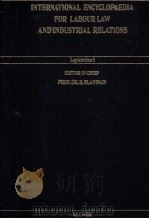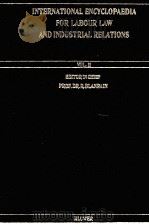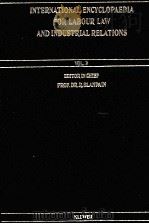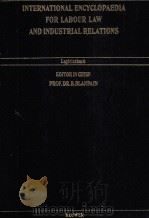《INTERNATIONAL ENCYCLOPAEDIA FOR LABOUR LAW AND INDUSTRIAL RELATIONS VOL.13》
| 作者 | EDITOR IN CHIEF AND PROF.DR.R. 编者 |
|---|---|
| 出版 | KLUWER |
| 参考页数 | 972 |
| 出版时间 | 1998(求助前请核对) 目录预览 |
| ISBN号 | 无 — 求助条款 |
| PDF编号 | 813698618(仅供预览,未存储实际文件) |
| 求助格式 | 扫描PDF(若分多册发行,每次仅能受理1册) |
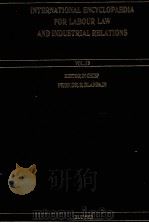
The Author3
Acknowledgements13
List of Abbreviations15
Introduction17
1. THE GENERAL BACKGROUND17
Ⅰ. Geography17
Ⅱ. Population17
Ⅲ. Employment Statistics18
Ⅳ. The Political and Administrative System19
Ⅴ. The Legal System and the Legislative Process20
Ⅵ. The Economy22
Ⅶ. Ownership Structure23
Ⅷ. The Public Sector24
Ⅸ. General Attitudes and Values24
2. DEFINITIONS AND CONCEPTS26
Ⅰ. Labour Law and Social Law26
Ⅱ. Labour Law27
Ⅲ. Industrial Relations27
Ⅳ. The Contract of Employment28
Ⅴ. The Concept of Employee28
Ⅵ. Workers and Salaried Employees30
Ⅶ. The Concept of Employer31
Ⅷ. The Concepts of Trade Union and Established Trade Union32
3. THE HISTORICAL BACKGROUND33
Ⅰ. From the Old Regulation System to Non-Intervention33
Ⅱ. The Rise of Trade Unions34
Ⅲ. The Employers Organise36
Ⅳ. Collective Relations are developed37
Ⅴ. The Development of the Collective Agreement39
Ⅵ. The Act of 1936 on the Rights of Association and Negotiation41
Ⅶ. The Saltsj?baden Epoch 1938-197042
Ⅷ. Labour Legislation in Other Fields44
Ⅸ. New Trends since 197045
4. ROLE OF GOVERNMENTAL INSTITUTIONS IN THE SHAPING ANDADMINISTRATION OF LABOUR LAW AND INDUSTRIAL RELATIONS48
Ⅰ. The Government and Wage Negotiations48
Ⅱ. The Labour Market Department and the AdministrativeAuthorities48
Ⅲ. Social Security49
Ⅳ. Employment Services49
Ⅴ. Control of Immigrants50
Ⅵ. Industrial Safety, the Working Environment and Job Satisfaction51
Ⅶ. Anti-discrimination Regulation51
5. SOURCES OF LABOUR LAW52
Ⅰ. Constitution52
Ⅱ. Legislation and Judge-made Law53
Ⅲ. Collective Agreements54
Ⅳ. The Individual Agreement55
Ⅴ. Works Rules56
Ⅵ. Custom and Usage56
Ⅶ. The Hierarchy of the Sources of Labour Law57
6. PRIVATE INTERNATIONAL LABOUR LAW58
Ⅰ. Introduction58
Ⅱ. Jurisdiction of the Swedish Courts58
Ⅲ. Applicable Law60
Ⅳ. Labour Law Relationships of a 'Public' Nature61
Selected Bibliography63
Ⅰ. Legislation, Case Law, etc.63
Ⅱ. Periodicals63
Ⅲ. Law Commentaries63
Ⅳ. Books63
Part Ⅰ. The Individual Employment Relation65
Chapter 1. Introduction65
1. DIFFERENT CATEGORIES OF EMPLOYEES - SPECIAL LEGISLATION65
2. THE INDIVIDUAL EMPLOYMENT CONTRACT67
Ⅰ. Forms of Engagement of Labour67
Ⅱ. Form and Content69
Ⅲ. Capacity to Conclude Employment Contracts69
A. Minors69
B. Women70
Chapter 2. Rights and Duties of the Parties in the Course of the Employment Relationship71
1. THE EMPLOYER'S POSITION AND MANAGERIAL POWERS71
2. THE EMPLOYER'S LIABILITY IN CONTRACT AND TORT72
3. THE EMPLOYEE'S LIABILITY72
4. THE EMPLOYER'S DISCIPLINARY POWERS73
5. SAFETY AND WORKING ENVIRONMENT73
6. HAS THE EMPLOYER A DUTY TO PROVIDE WORK?73
7. THE EMPLOYEE'S DUTY TO WORK74
8. THE EMPLOYEE'S DUTY TO OBEY ORDERS75
9. THE EMPLOYEE'S DUTY TO BE LOYAL77
Chapter 3. Working Time, Holidays, Annual Vacation78
1. REGULATION OF WORKING HOURS78
2. SPECIAL RESTRICTIONS FOR MINORS78
3. THE WORKING TIME ACT79
4. OTHER PROVISIONS CONCERNING OVERTIME WORK81
5. PART-TIME WORK. WORK SHARING82
6. HOLIDAYS82
7. ANNUAL VACATION83
8. EMPLOYEE'S RIGHT TO TIME OFF86
Chapter 4. Remuneration and Benefits87
1. DIFFERENT KINDS OF REMUNERATION87
2. PAY SYSTEMS88
3. WAGE PROTECTION MEASURES89
Ⅰ. Introduction89
Ⅱ. Priority in the Event of an Employer's Bankruptcy89
Ⅲ. Governmental Wage Guarantees89
Ⅳ. The Attachment of Wages90
Ⅴ. Setting-Off90
4. EQUAL PAY91
Chapter 5. Interruptions of Work, Incapacity, the Right to Time Off92
1. SHORT INTERRUPTIONS FOR TECHNICAL REASONS92
2. INTERRUPTION OF OPERATIONS FOR LONGER PERIODS. LAY-OFF93
3. LATE ARRIVAL93
4. INCAPACITY FOR WORK93
Ⅰ. Illness93
Ⅱ. Industrial Accidents and Injury94
Ⅲ. Pregnancy and Childbirth94
Ⅳ. Total Defence Service95
Ⅴ. Public Duties95
5. THE EMPLOYEE'S RIGHT TO TIME OFF95
Ⅰ. Leave for General Personal Reasons95
Ⅱ. Leave for Childcare and Kindred Reasons95
Ⅲ. Study Leave97
Ⅳ. Leave for Job Seeking97
Ⅴ. Leave for Trade Union Purposes97
Chapter 6. Termination of Employment Contracts,Job Security99
1. WAYS OF TERMINATING OR SUSPENDING THE EMPLOYMENT CONTRACT. LAY-OFF99
2. NOTES ON DEVELOPMENTS BEFORE THE EMPLOYMENT PROTECTION ACT100
3. NEW LEGISLATION IN THE 1970S AND 1980S102
4. MEANS OF TERMINATING EMPLOYMENT103
Ⅰ. The Employee brings the Employment to an End104
Ⅱ. The Employer brings the Employment to an End105
A. Restrictions as to Form of Employment105
B. Dismissal with Notice105
C. Periods of Notice and Economic Benefits105
D. What is Just Cause for Dismissal?106
1. Redundancy107
2. Circumstances relating to the employee's person108
E. Summary Dismissal110
F. Formalities and Procedures111
G. Non-renewal of Fixed-term Employment111
5. LAY-OFF111
6. PRIORITY RULES APPLYING TO DISMISSAL, LAY-OFF AND RE-EMPLOYMENT113
7. COLLECTIVE AGREEMENT ReGULATIONS CONCERNING THE EMPLOYMENT PROTECTION ACT114
8. PROCEDURE AND SANCTIONS114
Ⅰ. The Preparatory Stage: Notification and Consultation115
Ⅱ. Formalities connected with Dismissal, Discharge, etc116
Ⅲ. Disputes Procedure and Remedies117
9. TRANSFER TO ANOTHER JOB WITHIN THE FIRM118
10. TRANSFER OF THE UNDERTAKING119
Chapter 7. Protection of Certain Categories of Workers. Protection against Discrimination in Employment120
1. PROTECTIVE MEASURES AND DISCRIMINATION IN EMPLOYMENT120
2. THE CONCEPT OF DISCRIMINATION120
3. GENERAL ANTI-DISCRIMINATORY REGULATION IN SWEDEN121
4. SEX DISCRIMINATION122
Ⅰ. The Role of the Labour Market Organisations122
Ⅱ. Present Legislation Concerning Sex Discrimination122
A. Active Measures to Promote Equality123
B. Prohibition against Sex Discrimination124
C. The Equal Opportunities Ombudsman and the Equal Opportunities Commission125
5. RACE, ETHNICITY AND FOREIGN CITIZENSHIP126
6. ELDERLY EMPLOYEES AND THE OCCUPATIONALLY HANDICAPPED127
Chapter 8. Convenants of Non-competition129
Chapter 9. Inventions by Employees130
Chapter 10. Settlement of Disputes132
1. PROCEDURES FOR INDIVIDUAL DISPUTES WITH OR WITHOUT UNION INVOLVEMENT132
2. DISPUTES INVOLVING A UNION133
Ⅰ. The Role of the Organisations133
Ⅱ. The Disputes Negotiations133
Ⅲ. Arbitration134
Ⅳ. The Labour Court, its Establishment and Composition134
Ⅴ. The Competence of the Labour Court136
Ⅵ. The Labour Court: Procedure and Sanctions136
Ⅶ. The Role of the Labour Court137
3. DISPUTES NOT INVOLVING A UNION138
4. RULES ON THE PRIORITY RIGHT OF INTERPRETATION IN DISPUTES139
Part Ⅱ. Collective Labour Relations141
Chapter 1. Trade Union Freedom and the Right to Organise141
1. THE TWO ASPECTS141
2. TRADE UNION FREEDOM141
3. THE RIGHT OF ASSOCIATION OR RIGHT TO ORGANISE: ITS RECOGNITION142
4. THE CONTENTS OF THE RIGHT OF ASSOCIATION143
5. VIOLATION OF THE RIGHT OF ASSOCIATION144
6. RULES OF EVIDENCE145
7. THE RIGHT OF ASSOCIATION AND UNION SECURITY AGREEMENTS146
8. LEGITIMISING MOTIVES148
9. SANCTIONS AND REMEDIES149
10. SPECIAL REGULATIONS FOR EMPLOYEES IN EXECUTIVE POSITIONS149
Chapter 2. The Trade Unions and Employers' Associations151
1. CONCEPT AND LEGAL STATUS151
2. TRADE UNIONS151
Ⅰ. Organisation and Membership151
Ⅱ. Manual Workers' Unions152
A. LO152
1. Internal organisation152
2. Union rules154
3. Check-off156
4. Ideology and attitudes156
B. Syndicalist and Break-away Unions157
Ⅲ. Salaried Employees' Unions157
Ⅳ. Democracy in the Trade Unions158
3. EMPLOYERS' ASSOCIATIONS159
Ⅰ. Existing Organisations in the Private Sector159
Ⅱ. SAF: Structure, Policies and Internal Organisation159
4. RELATIONS BETWEEN THE INDIVIDUAL AND THE ORGANISATION160
Chapter 3. The Right of Negotiation163
1. ITS FUNDAMENTAL IMPORTANCE163
2. WHAT IS THE RIGHT OF NEGOTIATION?163
3. THE CONTENTS OF THE RIGHT OR DUTY TO NEGOTIATE164
4. WHAT DOES 'NEGOTIATION' SIGNIFY?164
5. SUBJECT MATTER AND TYPES OF NEGOTIATION165
6. THE RIGHT OF NEGOTIATION AND THE RIGHT TO RESORT TO INDUSTRIAL ACTION166
Chapter 4. The Collective Bargaining System and the Collective Agreement167
1. THE CENTRALISED COLLECTIVE BARGAINING SYSTEM167
2. SOME EFFECTS AND SPECIAL FEATURES OF THE CENTRALISED SYSTEM169
3. DESCRIPTION OF A COLLECTIVE AGREEMENT169
4. THE COLLECTIVE AGREEMENT FROM A LEGAL POINT OF VIEW171
Ⅰ. Concept and Form171
Ⅱ. Duration and Termination of Collective Agreements.Transfer of Enterprises173
A. Duration173
B. Termination174
C. Transfer174
Ⅲ. Construction and Interpretation of Collective Agreements175
5. LEGAL EFFECTS OF COLLECTIVE AGREEMENTS177
Ⅰ. Who is Bound by a Collective Agreement?177
Ⅱ. The Compulsory Effect of the Collective Agreement179
Ⅲ. Effects on Outsiders180
Ⅳ. Effects after Expiration181
Ⅴ. The Peace Function181
Ⅵ. The Effect of 'Establishing' the Trade Union182
Ⅶ. Sanctions182
Chapter 5. Industrial Action and the Peace Obligation.Protection of Vital Needs. Settlement of Industrial Disputes184
1. INDUSTRIAL CONFLICT IN RECENT YEARS184
2. TYPES OF INDUSTRIAL ACTION185
3. INDUSTRIAL CONFLICT AND THE LAW186
4. THE PEACE OBLIGATION ACCORDING TO THE CO-DETERMINATION ACT188
Ⅰ. Some Basic Concepts188
Ⅱ. The Co-determination Act 41189
Ⅲ. Commentaries on Rights Disputes and Claims for Alteration189
Ⅳ. Sympathetic Actions191
Ⅴ. Limitations on the Peace Obligation: Permissible Industrial Action192
Ⅵ. Sympathetic Strikes in Support of Foreign Workers. Political Strikes192
5. RULES CONCERNING UNLAWFUL STRIKES194
Ⅰ. Liability of Unions194
Ⅱ. Liability of Individual Employees194
Ⅲ. Duty to confer195
6. CONTRACTUAL RESTRICTIONS ON INDUSTRIAL ACTION196
7. PROTECTION OF VITAL NEEDS197
8. SETTLEMENT OF INDUSTRIAL DISPUTES198
9. CLOSING REMARKS200
Chapter 6. Institutionalised Relations. Joint Regulation and Co-determination201
1. METHODS OF CO-OPERATION PRIOR TO THE CO-DETERMINATION ACT201
Ⅰ. Works Councils201
Ⅱ. Collaboration in Matters of Industrial Safety203
Ⅲ. Other Collaboration Agreements204
Ⅳ. The New Legislation of the 1970s204
2. CO-OPERATIVE NEGOTIATIONS AND THE RIGHT OF VETO IN THE CO-DETERMINATION ACT205
3. THE RIGHT TO INFORMATION AND THE REGULATION OF SECRECY209
4. REGULATIONS CONCERNING CO-DETERMINATION AGREEMENTS210
5. PRIORITY RIGHT OF INTERPRETATION213
6. THE ACT CONCERNING TRADE UNION REPRESENTATIVES215
7. COLLABORATION ON MATTERS OF INDUSTRIAL SAFETY AND WORKING CONDITIONS218
Ⅰ. Safety Representatives218
Ⅱ. The Safety Committee220
Ⅲ. The Working Environment Agreement221
8. BOARD REPRESENTATION FOR EMPLOYEES222
9. EUROPEAN WORKS COUNCILS225
10. THE DEVELOPMENT AGREEMENT226
11. SOME REMARKS ON THE IMPACT OF THE LEGISLATION CONCERNING INDUSTRIAL DEMOCRACY230
Index233
1998《INTERNATIONAL ENCYCLOPAEDIA FOR LABOUR LAW AND INDUSTRIAL RELATIONS VOL.13》由于是年代较久的资料都绝版了,几乎不可能购买到实物。如果大家为了学习确实需要,可向博主求助其电子版PDF文件(由EDITOR IN CHIEF AND PROF.DR.R. 1998 KLUWER 出版的版本) 。对合法合规的求助,我会当即受理并将下载地址发送给你。
高度相关资料
-
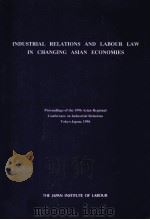
- Industrial relations and labour law in changing Asian economies.
- 1996 Japan Institute of Labour
-

- LABOUR LAW AND INDUSTRIAL RELATIONS
- 1983 CLARENDON PRESS OXFORD
-
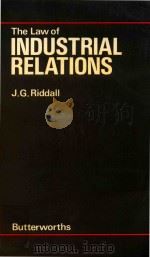
- THE LAW OF INDUSTRIAL RELATIONS
- 1981 LONDON BUTTERWORTHS
-
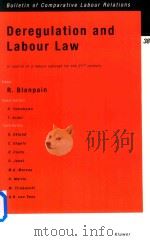
- Deregulation and Labour Law
- 1998 Kluwer
-

- STUDIES IN INTERNATIONAL LAW AND RELATIONS
- 1928 CAMBRIDGE
-
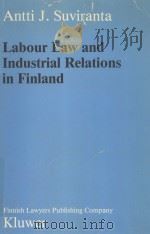
- LABOUR LAW AND INDUSTRIAL RELATIONS IN FINLAND
- 1987 FINNISH LAWYERS PUBLISHING COMPANY
-

- LABOUR LAW AND INDUSTRIAL RELATIONS IN THE FEDERAL REPUBLIC OF GERMANY
- 1987 KLUWER LAW AND TAXATION PUBLISHERS
-
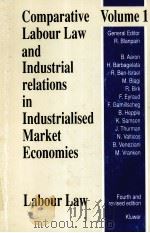
- COMPARATIVE LABOUR LAW AND INDUSTRIAL RELATIONS IN INDUSTRIALISEED MARKET ECONOMIES LABOUR LAW VOL
- 1990 KLUWER LAW AND TAXATION PUBLISHERS
-
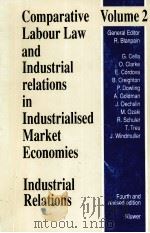
- COMPARATIVE LABOUR LAW AND INDUSTRIAL RELATIONS IN INDUSTRIALISEED MARKET ECONOMIES INDUSTRIAL RELA
- 1990 KLUWER LAW AND TAXATION PUBLISHERS
提示:百度云已更名为百度网盘(百度盘),天翼云盘、微盘下载地址……暂未提供。➥ PDF文字可复制化或转WORD
